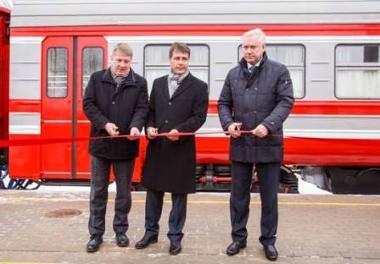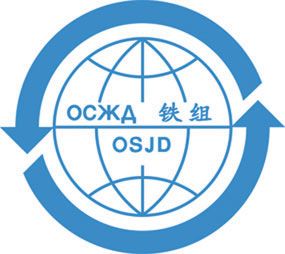Construction of the Second Rail Track on Skrlveri - Krustpils Line of Latvian Railway Completed (According to Latvijas dzelzcels SJSC as of 4th February, 2015)



Complicated but necessary
During this large-scale project's implementation a completely new railway infrastructure has been constructed, which includes a 56-km long rail track, as well as engineering structures and systems. A new bridge has been built over the River Aiviekste, as well as reconstructed have been a bridge over the River Perse and existing culverts and railway crossings.
The stations and stops on the line have undergone considerable changes, specifically raised platforms constructed, new lighting, benches and waste bins deployed, as well as ramps or sloped access ways for persons with limited mobility mounted. New alarm systems and other equipment have been installed in station buildings, which correspond to the demands of today.
"This was a long-expected and carefully prepared project that is necessary both for the railway and Latvia. It will allow the company to work even more effectively by ensuring stable revenue to the state budget and facilitating the development of the railway industry in general; meanwhile the residents will definitely appreciate the reconstructed platforms and renovated territories of the stations," said President of LDz, Ugis Magonis.
The project was complicated yet by the requirements set by several municipalities -for instance, in Plavinas a noise wall was built for protection against noises generated by the railway; in other places, the quality of railway crossing surfaces was improved. In order to ensure successful train traffic, the station rail tracks had to be extended at several stations during the implementation of the project. In order to improve passenger safety while waiting for trains, isle platforms were eliminated at Aizkraukle Station.
A challenge for everyone - LDz and entrepreneurs
On 17 March 2010 LDz received two tender applications for the construction of the second rail track on the Skrīveri - Krustpils line section. The offer of the association of companies Skonto Būve, BGMS, ACB and Binders was accepted.
"Construction of rail track are only four words, but they included a serious challenge for the designers and builders, as well as a huge amount of work performed, because it was not only the assembly of the rail track, it was the construction of a complete railway infrastructure - a railway infrastructure that must be present in a member state of the European Union in the 21 st century - which is characterised by European level quality, which is modern, safe, which has complicated, but modern engineering and technical solutions, which facilitates the development of the national economy," said Normunds Luste, the representative of the association of construction companies Skonto būve, BMGS, ACB and Binders, Board Member of LLC CBF Binders.
Upon the commencement of the project, the total volume of transported cargo in the section was 24.1 million tons per year, which conformed to 97% of the maximum throughput capacity of this section.
The total costs attributable to the project came to 93.4 million euros, with 65.5 million euros granted by the European Union Cohesion Fund. However, together with project supervision and the funds invested by LDz itself, the costs exceeded the amount of 100 million euros.
Several unforeseen situations arose during the implementation of the project: several explosive objects dating back to war times were found, as well as the consequences of railway accidents of the previous century. "Upon the removal of the soil layer, we discovered a considerable basin of diesel fuel, which was, undoubtedly, eliminated. Specific soil conditions that were not detected during the preliminary research of the project, for instance, the presence of peat, were detected in several areas. The soil base had to be reinforced by replacing the mass of peat with sand and stone chippings," explained Aija Poca, Head of LDz Project Department.
Historical Road
The railway line from Riga to Daugavpils was the second main railway line built in Tsarist Russia after that from Moscow to St. Petersburg. The fact that this railway line was initially built (1858-1861) with two rail tracks bears evidence of the significance of this line. The condition that main railway lines must have two rail tracks was in force during all railway construction works in Tsarist Russia.
During the First World War, the section from Ogre to Krustpils of this railway was in close proximity to the front line for two years and it was constantly subject to German artillery fire from the left bank of the River Daugava. Not only station buildings, but the entire railway infrastructure suffered. Meanwhile the young state of Latvia could renew this railway by sacrificing the second rail track, which was partially lost during the war.
Despite the considerable growth of traffic since 1941, the second track between Skirotava and Krustpils stations was renewed neither during the Second World War, nor during the first post-war years.
And only due to the planned increase in suburban passenger transportation and the planned electrification of the railway in the direction of Krustpils, was the second track renewed as far as Ogre in 1953, and after several years it was extended to Skrīveri. Due to a shortage of funds this works was not continued, until on 19 December 2014, after several years of implementing the project co-funded by the European Union Cohesion Fund, this rail track was renewed on the section between Skrīveri and Krustpils.
